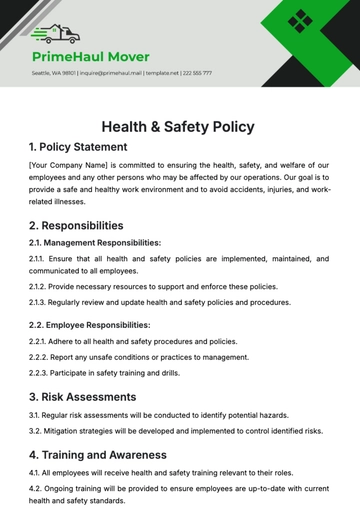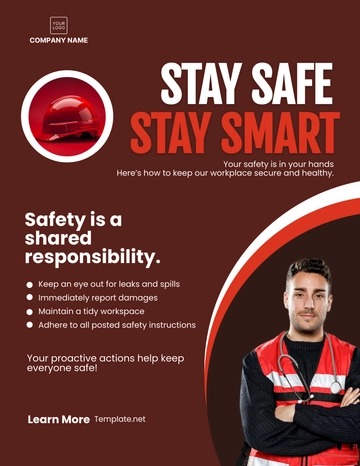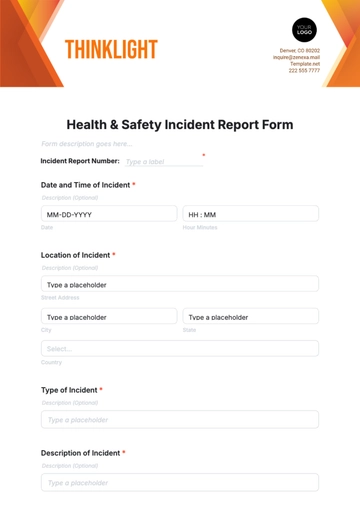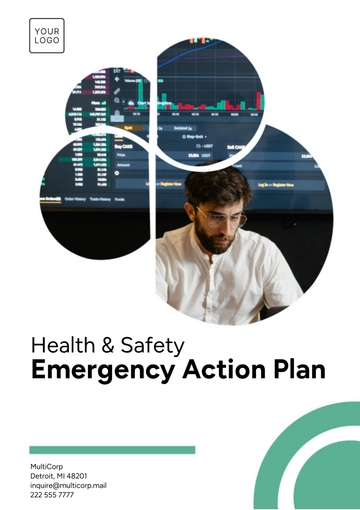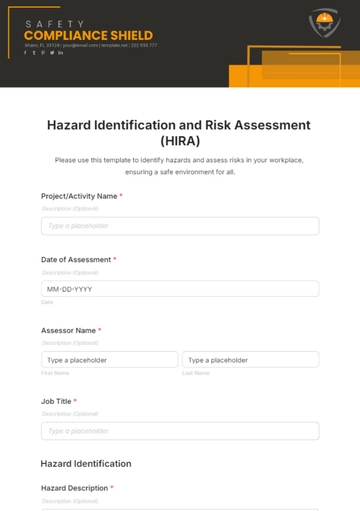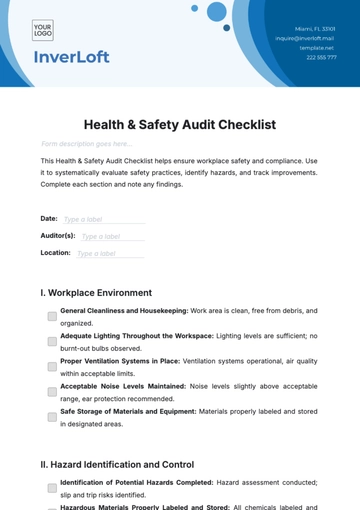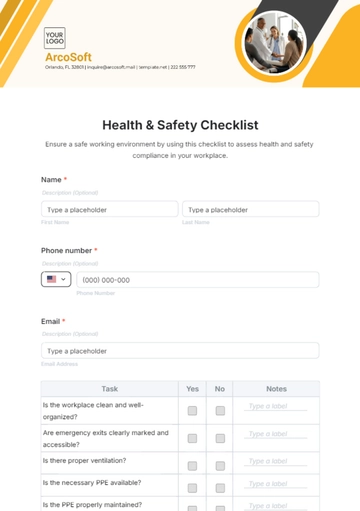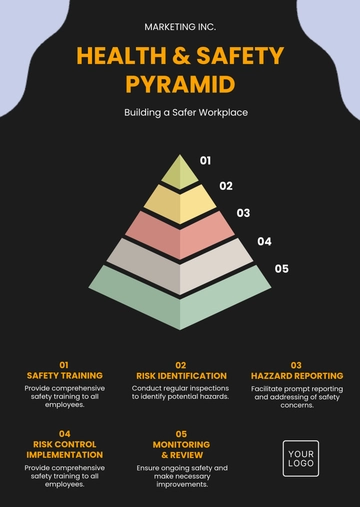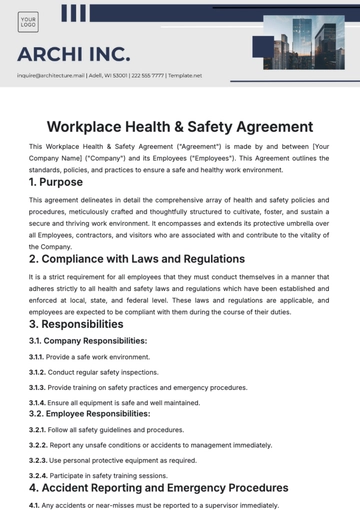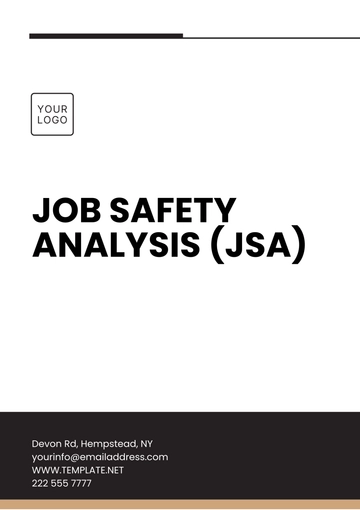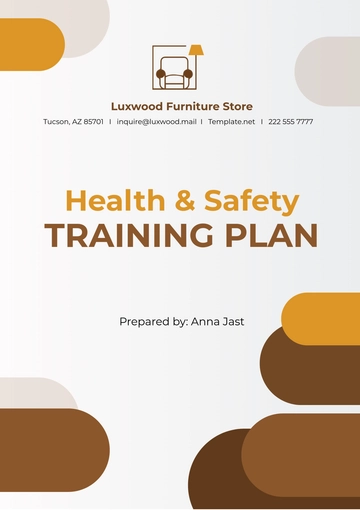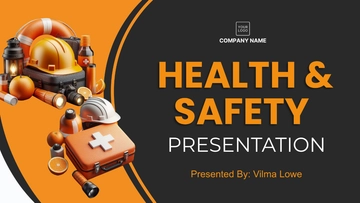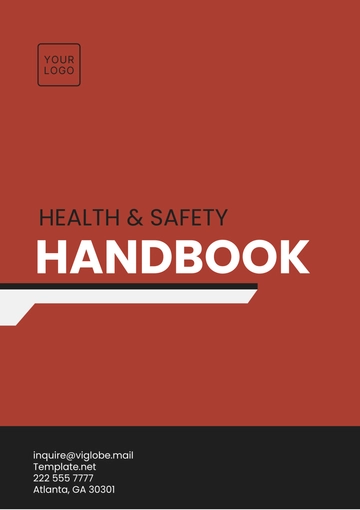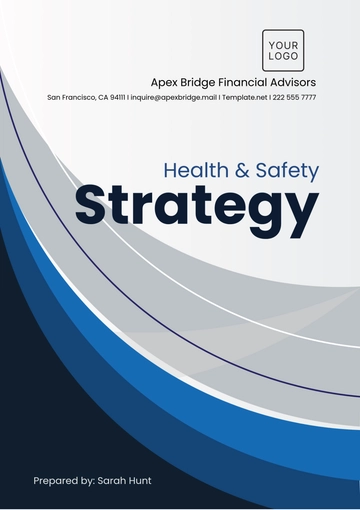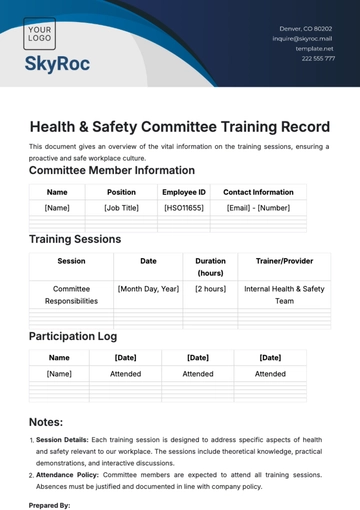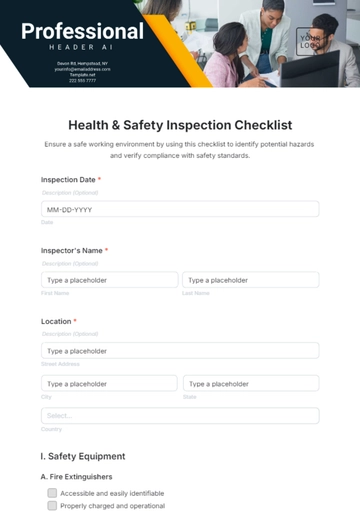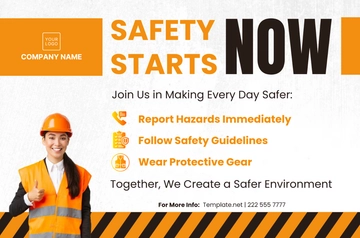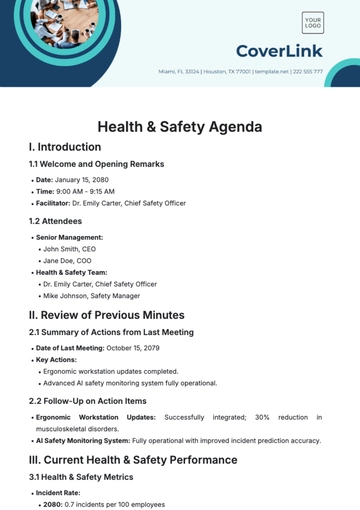Free Health & Safety Awareness Campaign Study
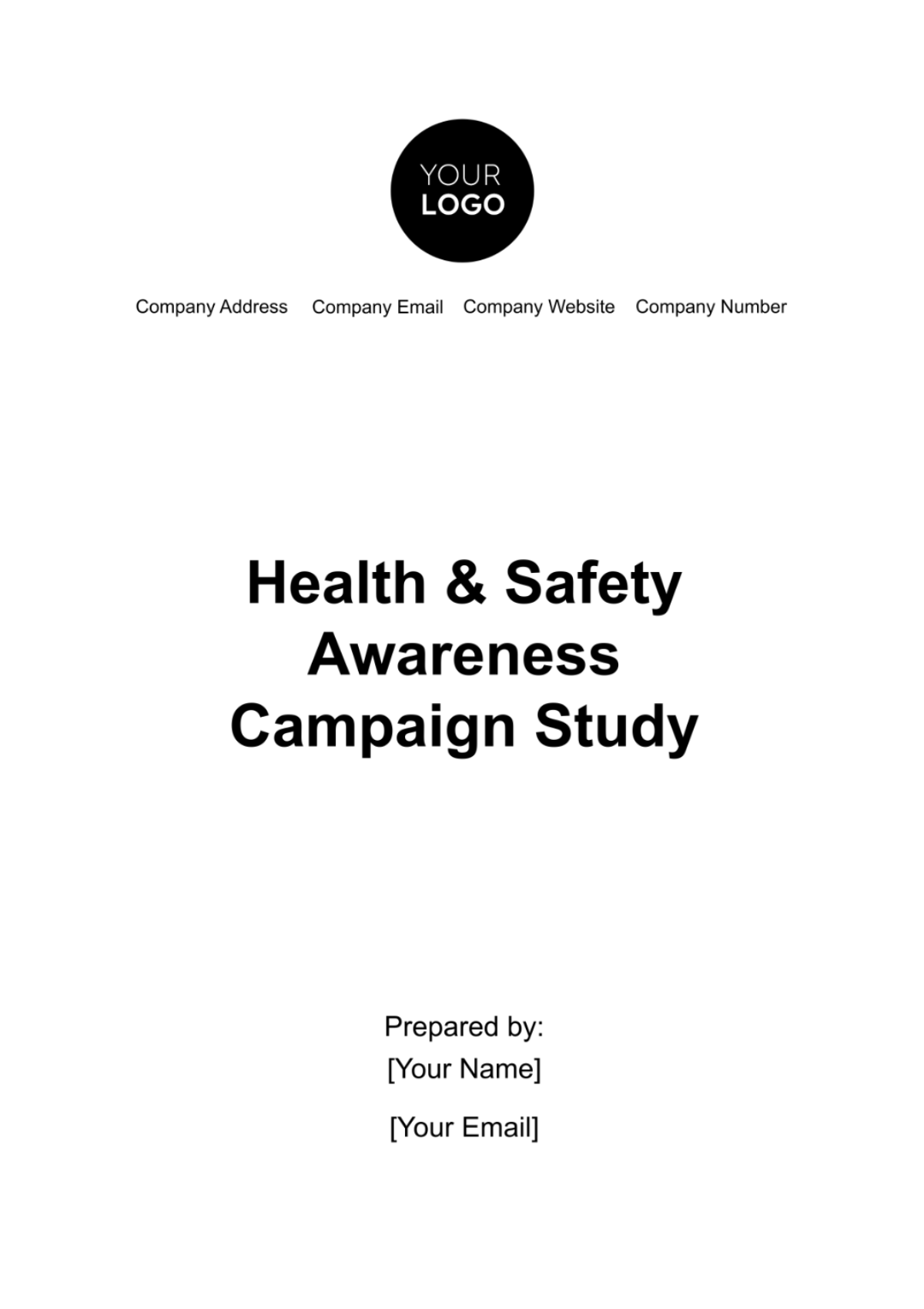
I. Introduction
A. Purpose
The purpose of this study is to assess the effectiveness of the ongoing campaign aimed at promoting a culture of workplace health and safety within our organization. The study aims to provide insights into the impact of the campaign on employee awareness, behavior, and overall safety conditions.
B. Scope
This study encompasses a detailed analysis of the awareness campaign, including its design, implementation, communication materials, training programs, and the subsequent impact on workplace health and safety metrics. It also extends to challenges faced and lessons learned during the campaign.
C. Background
In response to the growing importance of ensuring a safe working environment, our organization initiated a Health & Safety Awareness Campaign three months ago. The campaign utilized various communication channels, training sessions, and promotional materials to enhance employee understanding and compliance with health and safety protocols. This study seeks to evaluate the campaign's effectiveness and identify areas for improvement.
II. Objectives
The objectives of this study are:
A. To measure the effectiveness of the awareness campaign in increasing employee awareness of health and safety practices, evaluating changes in perception, and identifying areas where awareness can be strengthened.
B. To assess the impact of the campaign on employee behaviors related to health and safety, examining whether there have been observable changes in adherence to safety protocols and best practices.
C. To determine the campaign's influence on reducing workplace incidents and accidents, examine incident data before and after the initiation of the campaign to identify trends and improvements.
III. Campaign Design and Implementation
A. Communication Materials
The design and implementation of the campaign involved a strategic and diverse approach to engage employees effectively. The campaign utilized a variety of communication materials, including visually compelling posters, dynamic digital displays, and informative videos.
Poster Campaign
The poster campaign aimed to create a visual impact within the workplace. Each poster featured clear, concise messaging accompanied by eye-catching graphics to reinforce the importance of health and safety practices. Posters were strategically placed in high-visibility areas, such as break rooms and common corridors.
Digital Displays
Digital displays were strategically placed in high-traffic areas, including entrances and employee lounges. These displays featured rotating safety messages, ensuring regular exposure to critical information. The dynamic nature of digital content aimed to capture and maintain employee attention.
Video Presentations
Engaging video presentations were developed to provide in-depth insights into specific safety protocols and procedures. The videos were integrated into training sessions and made available through online platforms for convenient access. This multimedia approach enhanced knowledge dissemination across different communication channels.
IV. Poster Campaign Evaluation
A. Visibility and Engagement
The poster campaign's effectiveness is being assessed based on its visibility and engagement within the workplace. Preliminary observations indicate that posters strategically placed in high-traffic areas have garnered consistent attention during employee breaks, contributing to increased awareness of safety protocols.
B. Message Retention
An essential aspect of the evaluation involves measuring the message retention of the poster campaign. Initial feedback suggests that the clear and concise messaging, coupled with eye-catching graphics, has facilitated improved recall of safety information among employees.
C. Influence on Behavior
The ongoing analysis includes an examination of the posters' influence on employee behavior. By observing practices in areas with prominent posters, such as break rooms, insights into whether the campaign has effectively translated awareness into tangible safety behaviors are being gained.
V. Digital Displays Impact Assessment
A. Viewing Frequency
Preliminary data suggests that the strategically placed displays have maintained a high viewing frequency, providing regular exposure to safety messages and reinforcing key information.
B. Message Relevance
Employee feedback indicates positive responses, with the dynamic content deemed relevant and informative.
C. Sustained Employee Engagement
Employee feedback indicates positive responses, with the dynamic content deemed relevant and informative. Employee feedback indicates positive responses, with the dynamic content deemed relevant and informative.
VI. Video Presentations Effectiveness
A. Viewer Engagement
The effectiveness of video presentations is being evaluated based on viewer engagement. Preliminary data indicates that employees find the videos informative and engaging, contributing to a positive learning experience.
B. Comprehension of Key Messages
The assessment includes measuring the comprehension of key messages conveyed through video presentations. Initial feedback suggests a positive correlation between video content and improved understanding of safety protocols.
C. Impact on Behavior
Observations regarding the impact of video presentations on employee behavior are a crucial component of the evaluation. Preliminary insights indicate a positive correlation between video content and the adoption of safer practices.
VII. Feedback Mechanisms
A. Post-Campaign Surveys
Clarity and Effectiveness
Post-campaign surveys are being analyzed to gather feedback on the clarity and effectiveness of communication materials. Employee responses provide valuable insights into the overall effectiveness of the campaign in conveying safety messages clearly and whether it has positively influenced their understanding.
Relevance to Daily Practices
The surveys include questions addressing the relevance of the campaign to employees' daily practices. Insights gathered so far indicate that employees perceive the campaign as relevant to their work, contributing to increased awareness and consideration of safety measures in their routine activities.
Suggestions for Improvement
An essential component of feedback mechanisms involves collecting employee suggestions for improvement. Preliminary feedback has provided valuable suggestions, ranging from content refinement to the introduction of new communication channels. These insights will inform iterative improvements for future campaigns.
VIII. Methodology
A. Survey Instruments
The study involves an examination of the effectiveness of survey instruments used to measure awareness levels. Initial data from surveys indicates a positive response, with employees actively participating and providing valuable feedback on their awareness of health and safety practices.
B. Focus Groups
Focus groups have been conducted to gather qualitative insights into employee awareness. Preliminary analyses of focus group discussions provide nuanced perspectives on the effectiveness of the campaign in raising awareness, contributing to a more comprehensive understanding of employee perceptions.
C. Quantitative Metrics
In addition to qualitative methods, quantitative metrics are being analyzed to measure changes in awareness levels over specific periods. The ongoing assessment of these metrics aims to provide a quantitative perspective on the campaign's impact and identify trends in awareness among the workforce.
IX. Impact on Incidents and Accidents
The table below provides a representation of trends observed in the pre-campaign and post-campaign periods:
Metric | Pre-Campaign | Post-Campaign |
Number of Incidents | 35 | 12 |
Examining incident data serves as a quantitative benchmark for assessing the campaign's efficacy in fostering a safer work environment. The reduction in the number of incidents post-campaign suggests that the heightened awareness and training initiatives may be positively influencing employee behavior and adherence to safety protocols.
The decreasing trend in incidents not only contributes to the well-being of employees but also holds broader organizational implications. It signifies potential improvements in workplace safety culture, which, in turn, can lead to lower absenteeism, reduced injury-related expenses, and a more resilient workforce.
X. Challenges and Lessons Learned
A. Identified Challenges
Communication Barriers
Identified challenges include communication barriers that hindered the effective dissemination of safety information. Instances of information gaps and misinterpretations have been noted, and a detailed analysis is underway to understand the specific communication challenges faced during the campaign.
Employee Engagement
Challenges related to employee engagement have been identified, including variations in participation levels across departments. Initial assessments suggest that certain workgroups may require targeted strategies to enhance engagement, and further analysis is being conducted to identify the root causes.
Technology Integration
The integration of technology in training programs posed challenges, particularly regarding accessibility and technical issues. Ongoing evaluations aim to understand the specific challenges employees faced, providing valuable insights for optimizing technology integration in future campaigns.
B. Lessons Learned
Tailoring Communication Strategies
One key lesson learned is the importance of tailoring communication strategies to different employee groups. The diverse nature of the workforce requires a more personalized approach to ensure that safety messages are relevant and resonate with each group.
Continuous Training Updates
The need for continuous training updates has emerged as a crucial lesson. Employee knowledge retention can be enhanced through regular updates and refresher courses. This insight will inform future campaigns, ensuring that ongoing learning opportunities are integrated into the organizational culture.
Proactive Issue Resolution
A vital lesson learned is the importance of proactive issue resolution. The identification of challenges during the campaign emphasizes the need for a proactive approach to address issues promptly. Establishing mechanisms for real-time issue resolution will be a key consideration for future campaigns.
XI. Conclusion
The campaign has proven instrumental in elevating employee awareness and potentially mitigating workplace incidents. The strategic deployment of communication materials, encompassing engaging posters, dynamic digital displays, and informative videos, has fostered a heightened sense of safety consciousness. Training initiatives, notably content-rich modules and interactive workshops, have equipped employees with practical skills. While positive outcomes are evident, the study has unearthed areas for improvement, emphasizing the need for tailored communication strategies and continuous training initiatives. The recommendations put forth, including targeted communications, ongoing training, and proactive issue resolution, serve as a roadmap for refining future campaigns. This conclusion reflects both the achievements of the current campaign and the forward-looking strategies to cultivate a sustained culture of health and safety within the organization.
XII. Recommendations
The insights gathered from the study offer valuable guidance for refining future initiatives and strengthening the organization's commitment to workplace well-being. These are the following:
A. Tailored Communication Strategies
One key recommendation is the development of targeted communication strategies that address the diverse needs of different employee groups. This may involve considering department-specific challenges and preferences to ensure that safety messages are not only informative but also relatable and impactful. By tailoring messages and materials to resonate with specific audiences, the organization can enhance the overall effectiveness of communication efforts.
B. Continuous Training Initiatives
To address challenges related to knowledge retention, the implementation of continuous training initiatives is recommended. Incorporating regular updates and refresher courses will contribute to ongoing learning and reinforce safety practices among employees. This proactive approach ensures that employees remain well-informed about evolving safety protocols and fosters a culture of continuous improvement in health and safety awareness.
C. Proactive Issue Resolution Mechanisms
Establishing proactive issue resolution mechanisms is crucial for addressing challenges promptly. Creating accessible channels for employees to report issues, seek clarification, and provide feedback will contribute to a more responsive and adaptive approach to campaign management. This recommendation emphasizes the importance of maintaining open lines of communication to address concerns in real-time, fostering a collaborative and transparent safety culture.
D. Integration of Health and Safety Practices
To sustain a strong culture of health and safety, ongoing efforts should focus on integrating health and safety practices into daily work routines. Embedding safety considerations into the organizational culture reinforces the importance of prioritizing well-being in all aspects of work. This recommendation encourages the seamless integration of safety protocols into standard operating procedures, creating a workplace where health and safety are inherent aspects of daily operations.
- 100% Customizable, free editor
- Access 1 Million+ Templates, photo’s & graphics
- Download or share as a template
- Click and replace photos, graphics, text, backgrounds
- Resize, crop, AI write & more
- Access advanced editor
Introducing Template.net's Health & Safety Awareness Campaign Study Template, an essential resource for evaluating and optimizing safety initiatives. Fully customizable and editable in our Ai Editor Tool, this template enables businesses to assess the effectiveness of their awareness campaigns. Gain valuable insights, refine strategies, and enhance workplace safety with ease. Simplify the process and ensure a safer environment for your employees with our user-friendly platform.

